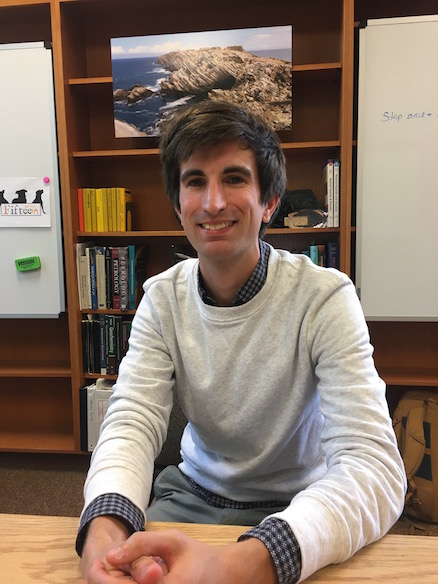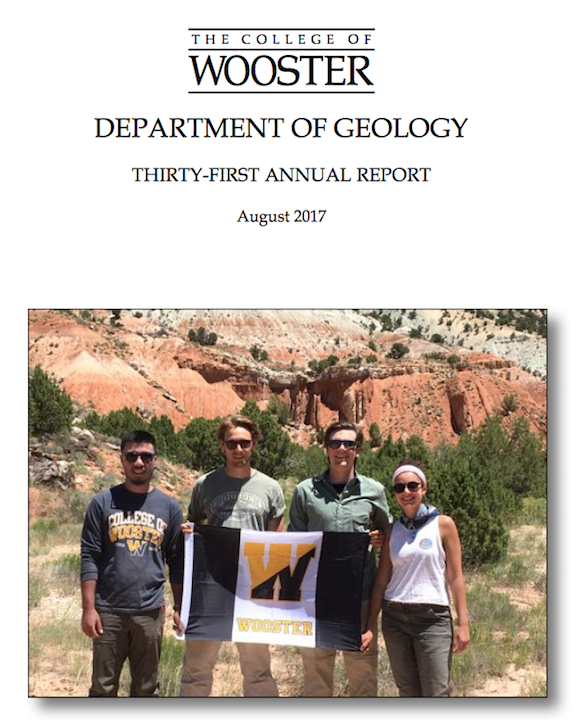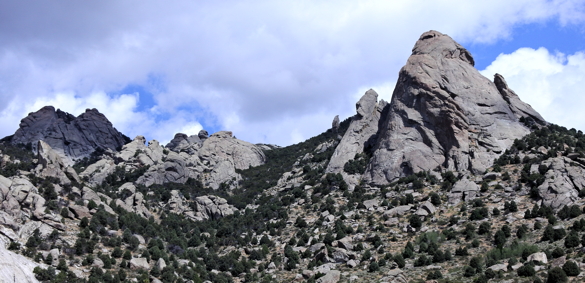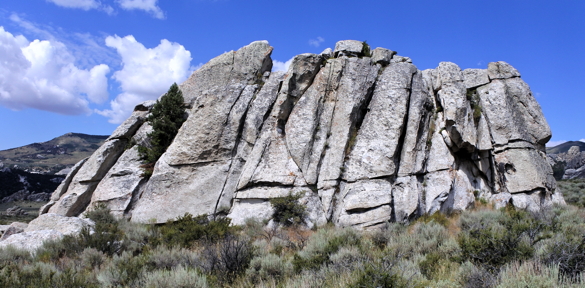 It’s not that I haven’t loved all my Invertebrate Paleontology classes, but the students this year are special because there are only ten of them. Lately I’ve had up to thirty students per class which is great for many reasons, but running field trips is not one of them. With ten students we can go places buses can’t, and I can pay closer attention to what each student is experiencing. Today’s field trip to an exposure of the Upper Ordovician upper Whitewater Formation near Richmond, Indiana, was delightful. (C/W-148; N 39.78722°, W 84.90166° — which has a nice Google Maps street view.)
It’s not that I haven’t loved all my Invertebrate Paleontology classes, but the students this year are special because there are only ten of them. Lately I’ve had up to thirty students per class which is great for many reasons, but running field trips is not one of them. With ten students we can go places buses can’t, and I can pay closer attention to what each student is experiencing. Today’s field trip to an exposure of the Upper Ordovician upper Whitewater Formation near Richmond, Indiana, was delightful. (C/W-148; N 39.78722°, W 84.90166° — which has a nice Google Maps street view.)
 The stratigraphy here is very simple and well delineated by generations of geologists. All the students need to do is collect fossils. They don’t know much about them yet because the course has just started, so their collections will be the basis of ongoing preservation and identification projects. Here we see Meredith Bruch and Victoria Race (below) finding goodies, while Fox Meyer climbs up the talus pursuing fabulous fossils.
The stratigraphy here is very simple and well delineated by generations of geologists. All the students need to do is collect fossils. They don’t know much about them yet because the course has just started, so their collections will be the basis of ongoing preservation and identification projects. Here we see Meredith Bruch and Victoria Race (below) finding goodies, while Fox Meyer climbs up the talus pursuing fabulous fossils.
 Our geological technician Nick Wiesenberg went along as a driver and an ace fossil collector with an excellent eye, which I learned about when he helped Team Minnesota last year.
Our geological technician Nick Wiesenberg went along as a driver and an ace fossil collector with an excellent eye, which I learned about when he helped Team Minnesota last year.
 Ann Wilkinson enjoys the wonders of roadside geology in the Midwest.
Ann Wilkinson enjoys the wonders of roadside geology in the Midwest.
 Here’s a nice representative slab Fox collected of the fossils at this location. Brachiopods, bryozoans, and bivalves dominate the fauna.
Here’s a nice representative slab Fox collected of the fossils at this location. Brachiopods, bryozoans, and bivalves dominate the fauna.
 Every student had a tray awaiting him or her on return to Wooster.
Every student had a tray awaiting him or her on return to Wooster.
 And the students did their work. Now each needs two trays. They will begin this week washing, labeling and sorting their specimens. Then they start identifying, using among other sources the excellent Digital Atlas of Ordovician Life and Cincinnatian Strata websites.
And the students did their work. Now each needs two trays. They will begin this week washing, labeling and sorting their specimens. Then they start identifying, using among other sources the excellent Digital Atlas of Ordovician Life and Cincinnatian Strata websites.
As a bonus, below is part of the 2007 Invertebrate Paleontology class on the same outcrop. Some alumni may recognize themselves, even though they are in classical paleontological poses.













































